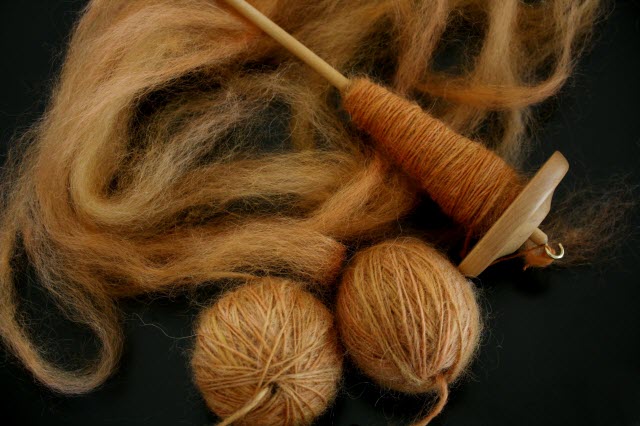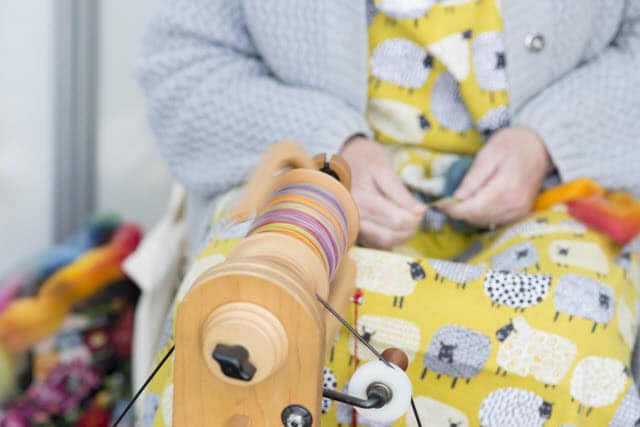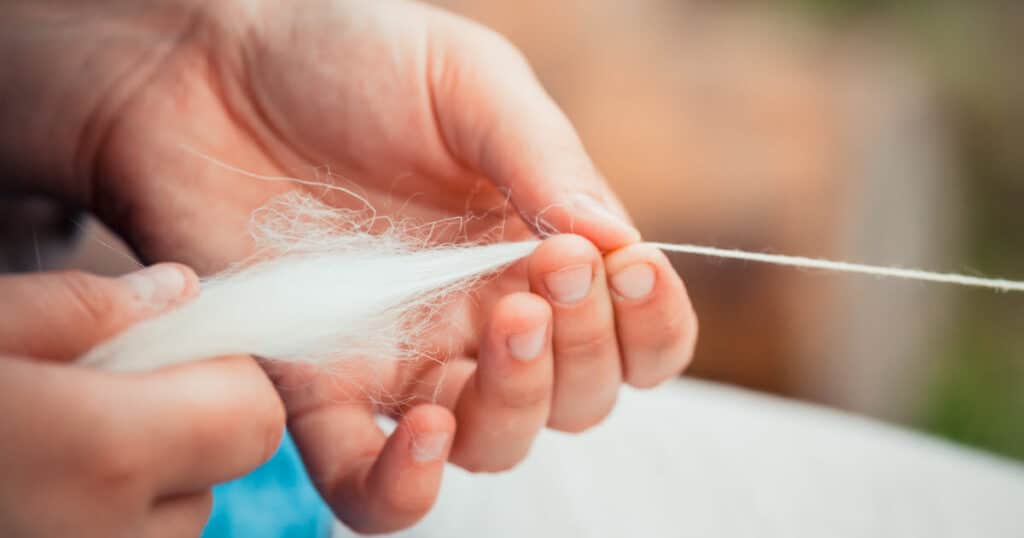When you think about it the idea for spinning wool probably came easily. At some point in history, someone must have looked at a sheep and thought, “Hmm, all that wool would really keep me warm.” Obviously, though, a pile of freshly-sheared wool doesn’t do anyone much good so the idea to shape sheep wool by twisting it deserves a lot of credit for all of the fabulous wool blankets and wool clothing we have today. Wool is a cooperative material—the scales on wool permit strands to form if the wool is twisted with enough force, and perhaps our chilly genius figured out how to take advantage of this quality. We don’t know when this happened, but there’s evidence of primitive spinning as early as 20,000 years ago. Early spinning probably consisted of forming a rough string by rubbing wool between the hands or against the thigh.
READ: What Is The Best Spinning Wheel for Beginners?
It really wasn’t much of a leap from this to spinning with a spindle. A spindle is pretty simple, though that doesn’t mean that it isn’t effective. Spindles were originally just sticks with a notch on one end. A piece of wool could be hooked in the notch, then drawn out while the stick was spun by moving it along the thigh. Yarn that was already spun was wound around the spindle.
About Drop Spindles
A spindle spins better if it has some weight on it, and the next improvement was to add a whorl—a disk of wood, stone, or clay—to the spindle.
This made it possible to let the spindle slowly drop while it spun. More yarn could be produced in the interval while the spindle was dropping. Drop spindles were probably first used about 10,000 years ago, and they’re still used today.

Once clothes—and blankets, and the sails of ships—began to be made out of woven fiber, the demand for yarn and thread must have been enormous.
There are medieval illustrations of women—and sometimes children—spinning while tending to the chickens, riding horseback, or just standing around, and at one time women must have spent a prodigious amount of time spinning wool.
Fortunately, the spinning wheel became common in Europe by the 13th century, though the drop spindle was still widely used.
But the demand for spun fiber was still so great it was hard to supply. It’s estimated that it required five spinners to provide enough spun material for one weaver.
It wasn’t until around 1820, with the advent of the Industrial Revolution, that the production of fiber became mechanized and enough fiber could easily be produced to meet demand.
You can learn more about the history of the wool industry by reading my article on the subject.
Best Ways to Spin Wool Today
Anyone who wants to try this ancient art today is spoiled for choice as far as equipment goes.
Drop spindles are widely available, some simple, some elaborately carved. There are unconventional spindles, such as the Navajo spindle, which rests on the ground rather than being dropped. You can also find spindles with whorls carved from antlers and spindles with whorls carved from stone.
And traditional spinning wheels offer you just as many choices. There are old-fashioned wheels, such as the Saxony, and modern contraptions that hardly look like spinning wheels at all. There are electric spinning wheels and wheels that can be built from kits.
If you’re starting out and are looking to purchase your first spinning wheel, I have an article on the subject which can provide some recommendations and guidance.

However you start … what all spindles and spinning wheels offer is an opportunity for creativity.
To appreciate the artistic potential of fiber, learning to spin is a great starting point. Little equipment is required, but a good book is an excellent way to cover of the basics of what is an astonishingly vast topic. You can check out some of our favorites here.

